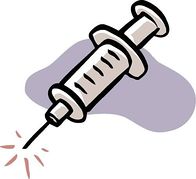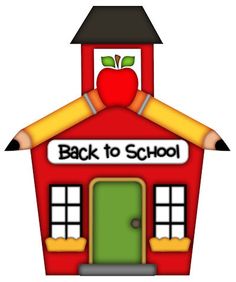Posts Tagged ‘Back-to-school’
Back-to-School Anxiety Tips for Children and Parents. By Our Student Pharmacist, Deema Alhaj.
The transition from carefree summer days to the structured routine of school can often spark anxiety in both children and parents. This back-to-school anxiety is a common experience, but it can be managed effectively with proactive strategies. By understanding the sources of anxiety and implementing practical coping techniques, both children and parents can navigate this transition with greater ease and confidence.
For Children:
- Open Conversations: Encourage open conversations about school. Ask your child how they feel about returning, what excites them, and what worries them. Validating their feelings and showing empathy can help alleviate their anxiety.
- Positive Visualization: Help your child visualize positive outcomes. Encourage them to imagine themselves succeeding in different school scenarios, like making new friends or understanding a challenging subject.
- Familiarity Breeds Comfort: Visit the school before it starts. Familiarity with the school environment can help reduce anxiety. Walk around the campus, locate classrooms, and discuss their daily routine to make them feel more at ease.
- Establish a Routine: Reestablishing a routine before school starts can help children ease into the transition. Gradually adjust bedtime, wake-up times, and meal schedules to align with the school routine.
- Stay Organized: Help your child get organized with school supplies and materials. This can give them a sense of control and preparedness, which reduces anxiety about being unprepared.
- Stay Positive: Share stories of your own school experiences and highlight the positive aspects. Remind them of the fun they’ll have with friends, engaging activities, and new learning opportunities.
For Parents:
- Empathetic Listening: Pay attention to your child’s concerns and anxieties. Listen without judgment and show empathy, which will help them feel understood and supported.
- Lead by Example: If you, as a parent, show enthusiasm about the upcoming school year, your child is more likely to adopt a positive outlook as well.
- Establish a Transition Period: Gradually transition from the relaxed summer schedule to the school routine. This can help ease the abrupt shift and allow both you and your child to adapt more smoothly.
- Collaborate with Teachers: Build a strong relationship with your child’s teacher. Having a clear line of communication can help you stay informed about your child’s progress and address any concerns promptly.
- Practice Relaxation Techniques: Teach your child relaxation techniques such as deep breathing, mindfulness, or simple yoga stretches. These techniques can be invaluable tools for managing anxiety.
- Encourage Problem-Solving: Teach your child problem-solving skills to address challenges that may arise at school. Knowing they have strategies to handle various situations can boost their confidence.
- Celebrate Achievements: Acknowledge your child’s accomplishments, no matter how small. Celebrating milestones can boost their self-esteem and help them feel more confident in their abilities.
- Limit Over-Scheduling: While extracurricular activities are valuable, be mindful not to over-schedule your child, which can lead to burnout and increased anxiety.
- Healthy Lifestyle Choices: Prioritize healthy meals, regular exercise, and sufficient sleep. Physical well-being significantly impacts emotional well-being.
Remember that back-to-school anxiety is a common experience. Parents can help children navigate this transition with resilience and confidence by creating a supportive and understanding environment. With the right strategies, the return to school can become an exciting opportunity for growth and learning for both children and parents alike.
Vaccine Requirements for the Upcoming School Year. By Our August Student Pharmacist, Mackenzie Gill.
School is just around the corner! While you are busy making sure your child has everything they need in order to be prepared for their first day, don’t forget to make sure they also have their required vaccinations.
The following vaccines are required by ALL Ohio schools. Failure to provide proof of vaccination could result in exclusion from school.
**All students entering 7th and 12th grade MUST get the meningococcal (meningitis) vaccine.**
This vaccine prevents and protects against meningococcal disease (meningitis).
What is meningitis?
Meningitis is the inflammation of brain and spinal cord membranes, typically caused by a bacterial infection. Meningitis can cause blindness, loss of limbs, and even death.
How does someone get meningitis?
Meningitis can be spread by coming in contact with the germs of an infected individual. Individuals who carry the bacteria do not always appear sick. The most common way these germs can be spread are by coughing, sneezing, and kissing. Children in school are especially susceptible because they are in close contact with many other students throughout the day.
What are the common signs and symptoms of meningitis?
Common symptoms include:
- Fever
- Headache
- Stiff neck
- Nausea and vomiting
- Sensitivity to light
- Confusion
**All students entering 7th grade MUST get a booster dose of the Tdap or Td vaccine.**
This vaccine prevents and protects against tetanus and diphtheria. Pertussis (whooping cough) is also protected against if receiving Tdap.
What is tetanus? How does someone get tetanus? What are the common signs and symptoms of tetanus?
Tetanus is a serious bacterial infection. Most commonly, tetanus occurs when a puncture wound occurs, like stepping on a nail or needle. There are other events that can cause tetanus like burns or pre-existing wounds that get contaminated with dirt, poop, or spit.
Common symptoms include:
- Jaw cramping
- Muscle spasms and stiffness
What is diphtheria? How does someone get diphtheria? What are the common signs and symptoms of diphtheria?
Diphtheria is a serious infection of the nose and throat. It is spread from person to person, commonly by coughing or sneezing.
Common symptoms include:
- Swollen glands in the neck
- Weakness
- Sore throat
What is pertussis? How does someone get pertussis? What are the common signs and symptoms of pertussis?
Pertussis is a highly contagious respiratory tract infection. It is spread from person to person, typically by coughing, sneezing, or sharing breathing space. Early symptoms resemble a typical cold. The symptoms progress into much more serious symptoms with the most common one being coughing fits followed by high-pitched “whoop” sounds. These fits can cause vomiting and exhaustion and shortness of breath.
These very serious illnesses can all be prevented by getting your children vaccinated! Most insurance plans cover these vaccines at no cost or at a reduced price.
Plain City Druggist can administer these vaccines to your children if they are over thirteen-years-old WITHOUT a prescription from their doctor. If your child is between the ages of 7-12, Plain City Druggist can administer these vaccines only WITH a prescription from their doctor.
We look forward to seeing you!
More information on these vaccines and Ohio School requirements can be found at www.cdc.gov and www.odh.ohio.gov
There are other vaccines that are required for entry into school, but are not discussed here since they are routinely given as part of your child’s pediatric visits as babies and/or young children.
Back to School Time. By Our August Student Pharmacist, Katy Hoffman.
August is here–the month kids have been dreading since the start of summer. The month that means it is time to return to school.
Getting back into school mode can be quite the chore. Here are some tips to help make the journey slightly more manageable.
- Try to get back on a proper sleeping schedule a few days before the start of school.
- No more video games or television until the early morning or even past 8 PM– staring at bright screens can make it harder to fall asleep come bedtime.
- No more caffeine past 6 PM— drinking caffeinated beverages (pop, tea, and/or coffee) later in the evening will make it more difficult to fall asleep at night.
- Come up with a bedtime routine—this will help the body realize when it is time to go to bed and it will allow the body to relax for sleep.
- Eat healthier to help increase energy levels.
- Limit your junk food intake— having a balanced diet is important to maintaining adequate and sustainable energy levels.
- Drink plenty of water—staying well hydrated is also important to having adequate energy levels.
- Help ease the transition with positive thoughts and a great attitude.
- Get excited for a new school year— it is a chance to reconnect with friends from class.
- Back to school shopping does not have to be a drag—try to get more than just basic school supplies. Get something special like a new outfit.
Getting back into school mode is difficult, but hopefully these tips will help ease the transition. Remember to sleep and eat right and keep a positive attitude. Next summer will be here before you know it.
FYI: First Day of Classes for Important Schools and Colleges (per Robin).
Jonathan Alder begins school on Wednesday, August 19.
Fairbanks begins on Monday, August 17.
St. John’s Lutheran School begins on Thursday, August 20.
The Ohio State University begins classes on Tuesday, August 25.
Washington University in St. Louis starts academic activities on Monday, August 24. We had to add this in for Margie, because her daughter, Michaela, will begin her Freshman year on August 24. Have a great Autumn Semester, Mic!
Free Backpack Program Continues for 6th Year for Jonathan Alder and Fairbanks 1st and 2nd Graders!
For the sixth year, we will be providing backpacks filled with selected school supplies to Jonathan Alder first and second graders at Plain City Elementary and Monroe Elementary.
This year, we are making backpacks available for Fairbanks first and second graders, as well.
Using the school supply lists located on the Jonathan Alder School web sites, we chose items that we thought would be most needed by the students.
To see the Fairbanks Elementary School supply lists, go HERE.
The backpacks are FREE.
The backpacks are our way of thanking the community for continually supporting us. All that is required to obtain a backpack is to have a parent or guardian stop in the pharmacy and sign for the child.
There is a limit of one backpack per child. Supplies are limited, so don’t wait!
Please drop by the pharmacy beginning on Thursday, August 14, to pick up a backpack filled with supplies for your proud student. The pharmacy is open Monday through Friday from 9 am to 6 pm and Saturday from 9 am to noon. We are closed on Sundays.
Hopefully, when you and your children open the backpacks, the smell of crayons will instantly put you and them in the “back-to-school” mood. It did us!
Please thank our Ohio State University College of Pharmacy student, Colin, for assembling a ton of backpacks! Colin is getting ready to head back to school, too, but, unfortunately, he won’t need any crayons in pharmacy school!
Thank you, as well, to our fourth year pharmacy students, Josh and Eli, for modeling the backpacks. If pharmacy doesn’t work out for them, we know they will have jobs in the fashion industry!
Remember, school starts on Wednesday, August 20, for those in the Jonathan Alder School District, as well as the Fairbanks Local School District! Can the summer really be over? Sigh.
Medication Use in Schools. By Our August Student Pharmacist, Ann Kuttothara, Who Very Happily is Almost Done With School.
As you and your children gear up to go back to school, there are many things to do: buy school supplies, shop for new clothes, get haircuts, and try out new lunch recipes.
Don’t forget, however, to add one more important task to your to-do list: get your child’s medication ready for school.
Many children have food allergies which require an EpiPen to be kept with them not only at home, but at school, as well. Some students use asthma inhalers and others carry insulin.
Your child’s important medical information should be shared with the school.
Discuss with your child’s doctor about using medications in school and whether prescriptions are needed for school use. For example, if a child needs an extra EpiPen at school, ask your doctor for an additional prescription for the second EpiPen. Also ask your child’s doctor about carrying medical information with the child when they are at school.
Along with the many forms you fill out for back to school, ensure that medical information and emergency contact information is completed accurately. Provide detailed information about your child’s allergies, medical conditions, and symptoms. Schedule a meeting with school staff, including your child’s teacher and the school nurse, to discuss the use of medications and any special instructions. You may be able to talk with the official in charge of food services, as well, for those children with food allergies. Work with your child’s doctor and school to develop an emergency action plan for steps to follow in case medication administration is necessary.
So how does your pharmacist fit in? Ask your pharmacist to show you how to use all medications, including the EpiPen. Your pharmacist will use the EpiPen training device to help you practice, so you will be comfortable using the actual EpiPen when the time comes. If your child uses medications that need to be taken at school, ask your pharmacist to provide two bottles to separate the medicine for home use and for school use–that way appropriate labels with instructions will be available in both places. Your pharmacist is a great resource, so discuss any questions or concerns with them.
Quick Tips for the EpiPen:
Keep the EpiPen at room temperature and not in cars where the temperatures can become very hot.
Check to make sure the solution is NOT cloudy and make sure it is NOT expired.
Give the injection in the outer thigh. The injection can be given through clothing.
Do not re-use the EpiPen after it is used.
How To Use the EpiPen (follow the picture instructions):
1. Flip open the yellow cap of your EpiPen or the green cap of your EpiPen Jr. Slide the auto-injector out of the carrier tube. Grasp the EpiPen in your fist with the orange tip pointing downward. Remove the blue safety release by pulling straight up–do not bend or twist the release.
2. Push the orange tip against the outer thigh. You can do this through clothing.
3. Push down until a “click” is heard or felt and hold for 10 seconds.
4. Remove the EpiPen and massage the injection site for 10 seconds.
REFERENCES:
Management of Food Allergy in the School Setting. Available from: http://pediatrics.aappublications.org/content/126/6/1232.full
http://www.epipen.com/Professionals/Pharmacists/Administer.aspx
EpiPen Use: Kids Health at The Children’s Hospital at Westmead: http://kidshealth.schn.health.nsw.gov.au/fact-sheets/epipen-use

















